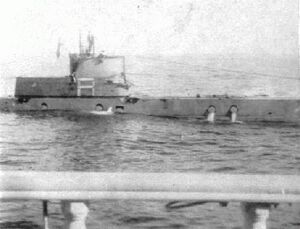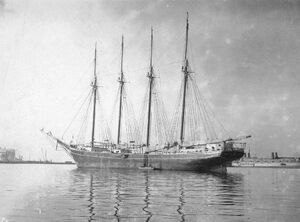L-8
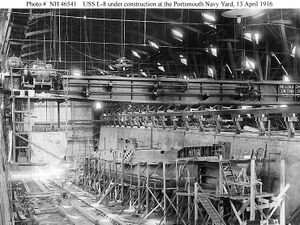
L-8 was a Lake design built under license at the Portsmouth Navy Yard in Kittery, ME. It is shown here on April 13, 1916 on the building ways in the old Franklin Shiphouse. It was the first submarine built at a U.S. government owned shipyard. The USN was trying to gain experience in building submarines so that some level of competition could be provided to Electric Boat and Lake. Simon Lake desperately needed the cash the license provided his company, and the Navy gained valuable experience in the complicated art of building submarines.
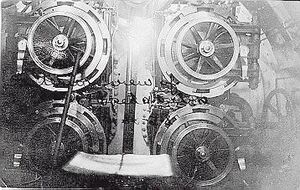
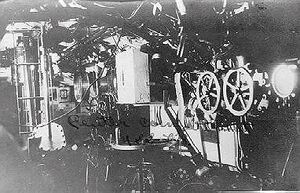
L-8 was armed with four 18-inch torpedo tubes in the bow. Her primary weapon was the Bliss-Leavitt Mk 6 or Mk 7 torpedo. She could carry eight of the weapons, four in the tubes with one reload each. The large handwheels on each tube opened the breech door. The levers on each tube side would open the outer muzzle doors once the tube was flooded and prepared to fire.
L-8 control room looking aft from the forward starboard corner. The ladder to the conning tower in on the left. Just to the right of the ladder is the diving control station, with a large depth gauge and control wheels for the diving planes. The two large valve handwheels on the right are most likely for the ballast control system.
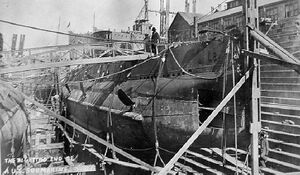
L-8 in drydock, probably in at the Philadelphia Navy Yard in the late fall of 1917. She was undergoing an overhaul prior to deploying across the Atlantic. Her torpedo tubes are open for maintenance, and her three starboard side diving planes are partially rigged out. The Lake design emphasized diving with a level keel, as opposed to the Electric Boat design which favored angling the boat downward to dive. The Lake technique required additional planes amidships to enable adequate control during the diving/surfacing maneuver. Ultimately the Lake method would prove to be unsatisfactory and the Navy standardized on the EB method of angle diving/surfacing with one set of planes forward and one set aft.
